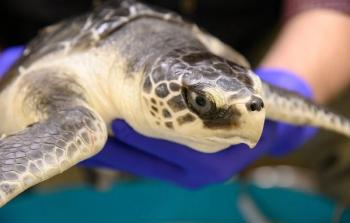“Back in my day” is not something I would ever say, but more than 20 years ago, I remember feline infectious peritonitis (FIP) as a “kitten killer” and a “death sentence”—every time. My fledgling role as a veterinary assistant in a feline-exclusive clinic gave me firsthand experience with the devastating effects of this disease early in my career under a veterinarian whose treatments for other difficult conditions were admirable. However, there was no known help for these unfortunate owners with kittens who were often just a few months old. Additional experiences with FIP-afflicted cats came through a feline shelter where I had practiced for over 3 years. Despite excellent supportive care from volunteers and staff present 24/7, all perished.
(Box) An oral medication could also be obtained; although less costly, it did not have a high success rate with more advanced effusive disease or neurologic and ocular presentations, later understood to be due to insufficient concentrations of the drug crossing the blood-brain or blood-ocular barriers.2,3 Those cases of FIP were still reliant on injectable medication. For cat owners in the US, this injectable drug was most accessible through a virtual underground network of volunteers known as FIP Warriors, who would order it from China in bulk and facilitate distribution.
Box. FIP drug therapy
In recent years, nucleoside analogues have been developed, including an injectable treatment from China for FIP-diagnosed patients that has started to gain momentum in the US. However, it had to be sourced through less-than-ideal methods. The downsides of this drug were as follows:
- Veterinarians could not legally prescribe nor assist owners in administering this painful injection, which an owner had to give daily for 84 days.
- It was not readily accessible for most people without the aid of multiple faceless Samaritans nationwide.
- Acquired vials used in treatment were not labeled by the FDA for use in the US for our companion animals, nor was the drug guaranteed to be consistent in where it was produced or how effective it might be.
- The drug is expensive, and 84 days is a long treatment period. There was no guarantee of a positive outcome, and some cats would succumb to a relapse, requiring another round of treatment.1
About 4 years ago, I was practicing as a relief doctor filling in at a local urgent pet care facility. I could not help a couple with a Maine coon, barely 16 months old, with effusive FIP—partly because the male owner’s work imposed severe restrictions over his personal life, which included not allowing any social media presence for him or his wife, and partly because I was not enabled to by any legal means. I could not guide them to FIP Warriors volunteers, and they did not have the resources to obtain the medication of their own accord. I had just moved to the area a few months prior, so I knew no other way to help them and felt like an utter failure as a veterinarian. I will never forget the devastated looks on their faces as they held their handsome silver classic tabby boy in their laps and how it wrenched at my heart to give them half-helpful supportive care suggestions along with my recommendation to appreciate every day they could while he had some quality of life remaining.
This risky treatment was painful, costly, and hard to get, and veterinarians in the US could not order, prescribe, or administer it without risking our licenses. So, standing by and observing laypeople take over the responsibility of care for these FIP-afflicted patients was enfeebling to those of us who devoted our lives and education to healing and relieving suffering.
The silver lining to this drug was that it was working. On average, over 80% of cats survived into remission and thrived from our collective spectators’ position on the sidelines, cheating death.4 The survival of patients could be higher depending on individual cases, combination therapy, or increased doses based on certain variables.5
The main barrier was that we could not readily access an FDA-labeled drug in the US or Canada for veterinary use. Injectable remdesivir (Veklury; Gilead Sciences) was granted approval with few restrictions for human use against COVID-19 in 2020 and then received further FDA approval in 2022 to include pediatric patients at least 4 weeks old or 3 kg in weight,6,7 but veterinarians could not yet access it, in part due to confusion around the “emergency use” status.





